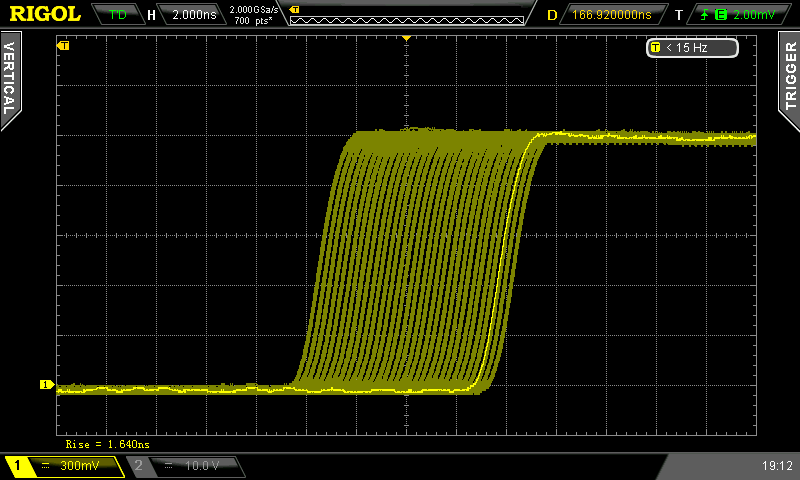I hadn't noticed that roll mode stopped at 200ms/div! It's almost certainly not a coincidence that the sweep behavior in Y-T changes at the same time.
Back to one of your original questions:
"Question 1: is this always normal...shouldn't the last trace vanish according to persistence setting? Do all DSO behave like this?"
The digital screen isn't faded in real time like a CRT phosphor would. I don't think any DSO or DPO emulate the phosphor decay like that, though I can really only speak to the one I own (DS2000 series.) Nothing fades out, it is just replaced by newer data when new data is available. This is true even at the 200ms time base: the old data stays there at the same intensity until the "trace" replaces it with new data. Then there's a triggering delay, and it repeats. Note that if the trigger is in the center, you have to wait for 7*200ms before it can start triggering since you've asked for 7*200ms of pre-trigger data. If you put the trigger to the extreme left of the waveform, you'll start seeing new data much sooner.
Perhaps it would help you to see what happens when persistence is actually turned up. On the DS2000 scopes, there's only two phases of fading: "In the most recent waveform" and "In a previous waveform". Here's a nice example (from page 65 of
marmad's massive DS2000 thread) As your scope is from the same Ultravision line, I suspect it works the same:

How can this behavior live up to the 100000 waveforms/sec display update rate that is specified for this scope?
That rate isn't for every configuration of the scope; it's the
maximum update rate. And when you think about it, you can't have a waveform that represents 1.4s and generate more than one of those in a second

My question is why doesn't this behavior remain the same at 100mSec/div to 5mS/div scan rates?
Potentially it is just a UI choice in the firmware, as 100ms/div still seems like a pretty slow trace to me. However, there will be a technical limit at some point. At the smaller time scales, the display gets updated during the "dead time" while sampling isn't occurring, so the display doesn't have to keep up. Only the triggering and storage mechanisms need to keep up. There is going to be some threshold where the display can't update the trace fast enough while sampling, and the scope won't be able to support roll mode or a real-time trace at those time scales.
The display should display nothing when nothing is to be displayed!
There is the previous waveform to display

The alternative would be to flash the previous waveform and then display black. It's not the same as the analog scope, which sits blank until triggered, and then you immediately start to see the trace crawl across once triggered.
If you're looking for the same kind of visual cue, then check the upper left of the screen. In the screenshot above, you can see it display "T'D". It'll show "Wait" when the previous waveform is displayed and it's waiting for a trigger. Once it triggers, that corner will update to "T'D", and then once the waveform is captured the screen will change and it'll fall back to "Wait".
I admit, I do find 100ms/div a bit awkward to work at.